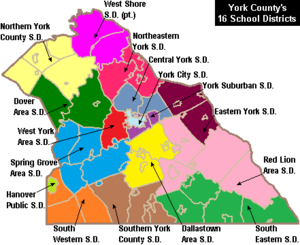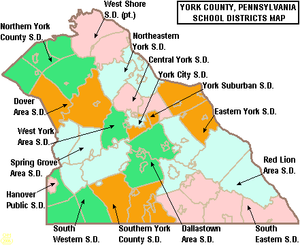| South Eastern School District | |
|---|---|
 | |
| Address | |
377 Main Street , Pennsylvania , 17321United States | |
| District information | |
| Type | Public |
| Other information | |
| Website | sesdweb |
The South Eastern School District is a midsized, rural, public school district in southern York County, Pennsylvania. It serves the boroughs of Cross Roads, Stewartstown, Delta, and Fawn Grove, plus the townships of Hopewell Township, East Hopewell Township, Fawn Township, and Peach Bottom Township. It also includes the villages of Bryansville and Woodbine. The district encompasses approximately 105 square miles (270 km2). According to data from the 2000 federal census, it serves a resident population of 17,884 people. By 2010, South Eastern School District's population increased to 19,567 people. [1] In 2009, the district residents’ per capita income was $20,060, while the median family income was $55,846. [2] In the Commonwealth, the median family income was $49,501 [3] and the United States median family income was $49,445, in 2010. [4]
